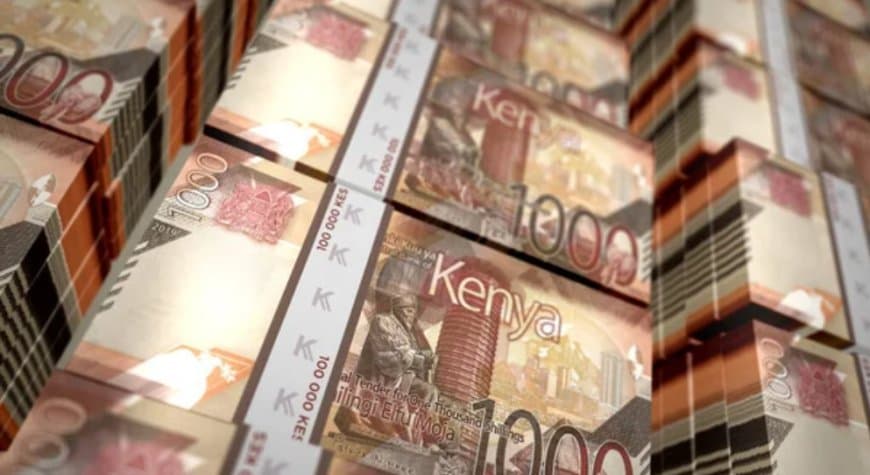Loading News Article...
We're loading the full news article for you. This includes the article content, images, author information, and related articles.
We're loading the full news article for you. This includes the article content, images, author information, and related articles.
A damning new report by Oxfam reveals the stark reality of Kenya's economic disparity, where a tiny elite's wealth eclipses that of 77% of the population, intensifying calls for urgent fiscal and social policy reforms.

A bombshell report released on Wednesday, 26 November 2025, has laid bare the extreme concentration of wealth in Kenya, revealing that the country's 125 wealthiest individuals own more than 42.6 million of their fellow citizens combined. The report, titled "Kenya's Inequality Crisis: The Great Economic Divide," was published by Oxfam International and details a widening chasm between a super-rich minority and the vast majority of the population. This elite group, representing less than 0.1% of the populace, controls more financial resources than 77% of the nation, a figure that casts a harsh light on the outcomes of years of economic growth.
The analysis points to a system where the benefits of economic expansion are disproportionately captured by those at the very top. Between 2019 and 2023, Kenya's richest 1% amassed nearly two-fifths of all newly created wealth. This trend is occurring while poverty deepens for millions. Since 2015, an additional seven million Kenyans have fallen into extreme poverty, defined as living on less than KSh 130 per day. According to Oxfam, this is not an accident but the result of deliberate policy choices. The report identifies chronic underfunding of public services, regressive taxation policies, and crippling debt repayments as key drivers of this inequality. In 2024, a staggering KSh 68 out of every KSh 100 in tax revenue was allocated to servicing debt, an amount double the education budget and nearly 15 times the national health budget.
The consequences of this economic imbalance are severe and tangible for the average citizen. The report highlights a crisis in public services, with government spending per primary school pupil plummeting to just 18% of its 2003 level. This has resulted in children from the poorest 20% of households receiving almost five fewer years of schooling than those from the wealthiest families. Access to healthcare is similarly stratified, with only four million people out of a population projected to be over 53 million in 2025 actively contributing to the Social Health Insurance Fund (SHIF). The cost of living crisis exacerbates these challenges. Food prices are now 50% higher than they were in 2020, and the number of Kenyans facing food insecurity has surged by 17 million over the past decade. For low-income residents in Nairobi, the situation is even more dire, as they have experienced inflation rates 27% higher than their wealthier counterparts over the last four years. Meanwhile, the average worker is 11% poorer in real terms than before.
The report paints a picture of a dual economy. While millions struggle, the fortunes of the ultra-rich continue to swell. The study notes that a Chief Executive Officer in one of Kenya's ten largest companies earns, on average, 214 times more than a teacher. This disparity underscores that the issue is not a lack of national wealth, but its inequitable distribution. Kenya's GDP has grown from KSh 9 trillion in 2015 to KSh 16.15 trillion in 2024, yet this growth has not translated into shared prosperity. Oxfam Kenya's Executive Director, Mwongera Mutiga, stated that inequality is the product of “unjust policies and political inaction,” emphasizing that the gap has been “allowed to grow unchecked.”
Despite the grim statistics, the report insists that this trajectory is reversible. Oxfam proposes a series of bold reforms aimed at creating a more equitable society. Key recommendations include implementing a progressive taxation system that fairly taxes high incomes and wealth, including a net wealth tax on the super-rich. The organization also calls for a significant increase in investment in universal public services like education and healthcare, suggesting the education budget should be at least 20% of government expenditure. Restructuring financial commitments to free up resources from debt repayment is also highlighted as a critical step. The report argues that reducing inequality is not just a moral imperative but an economic one. By tackling the divide, the government could accelerate poverty reduction and foster more sustainable and inclusive growth for all Kenyans.
Keep the conversation in one place—threads here stay linked to the story and in the forums.
Other hot threads
E-sports and Gaming Community in Kenya
Active 6 months ago
Popular Recreational Activities Across Counties
Active 6 months ago
Investing in Youth Sports Development Programs
Active 6 months ago
The Role of Technology in Modern Agriculture (AgriTech)
Active 6 months ago